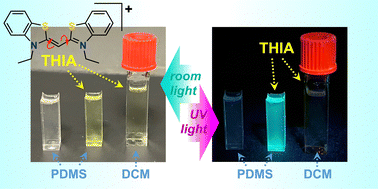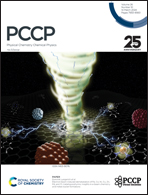Poly(dimethylsiloxane) as a room-temperature solid solvent for photophysics and photochemistry†
Abstract
Medium viscosity strongly affects the dynamics of solvated species and can drastically alter the deactivation pathways of their excited states. This study demonstrates the utility of poly(dimethylsiloxane) (PDMS) as a room-temperature solid-state medium for optical spectroscopy. As a thermoset elastic polymer, PDMS is transparent in the near ultraviolet, visible, and near infrared spectral regions. It is easy to mould into any shape, forming surfaces with a pronounced smoothness. While PDMS is broadly used for the fabrication of microfluidic devices, it swells in organic solvents, presenting severe limitations for the utility of such devices for applications employing non-aqueous fluids. Nevertheless, this swelling is reversible, which proves immensely beneficial for loading samples into the PDMS solid matrix. Transferring molecular-rotor dyes (used for staining prokaryotic cells and amyloid proteins) from non-viscous solvents into PDMS induces orders-of-magnitude enhancement of their fluorescence quantum yield and excited-state lifetimes, providing mechanistic insights about their deactivation pathways. These findings demonstrate the unexplored potential of PDMS as a solid solvent for optical applications.



 Please wait while we load your content...
Please wait while we load your content...